Paths
One of the most common uses of geotextiles in a summer cottage is paths. Anyone who has laid them at least once knows that over time, the tiles begin to “go in waves” and crack.
This can be partially avoided by laying a layer of textile between layers of loose materials, such as sand and gravel, which are most often used at the base of a path. Thanks to geotextiles, the load will be distributed more evenly, and the bulk materials will not mix with each other.
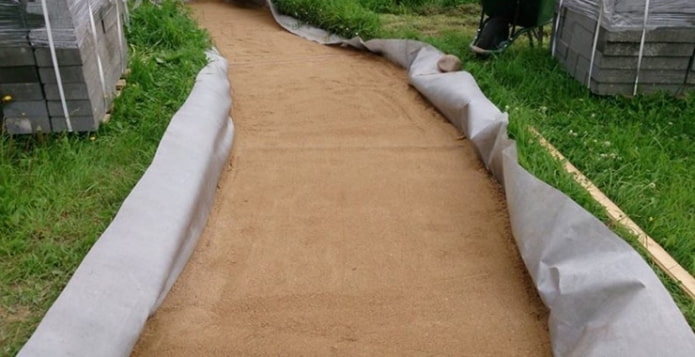
Beds
Sometimes on the site you can find “strange” beds covered with a sheet of geotextile with slits for plants. The fact is that geotextile does not let in sunlight, which is necessary for all plants, including weeds. Therefore, on a bed covered with geotextile, plants will grow only in special slits where seedlings are planted. This method greatly reduces the time spent on weeding.
Note. It is worth adding that geotextiles also retain moisture in the soil (especially in the upper layers), reducing the rate of evaporation and weathering. Therefore, this method of using geotextiles will be extremely useful for gardeners who cannot or do not want to regularly water their plants.
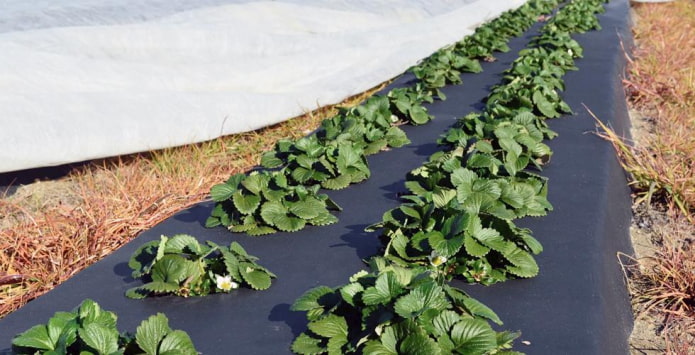
Canopy
Some plants need to be protected from direct sunlight, especially at midday, when the sun is at its zenith. Usually, ordinary fabric or other improvised materials are used for this.
But why not use geotextiles as a canopy? As already mentioned, it practically does not transmit light, but unlike other materials it is more durable and does not lose its properties under the influence of sunlight.
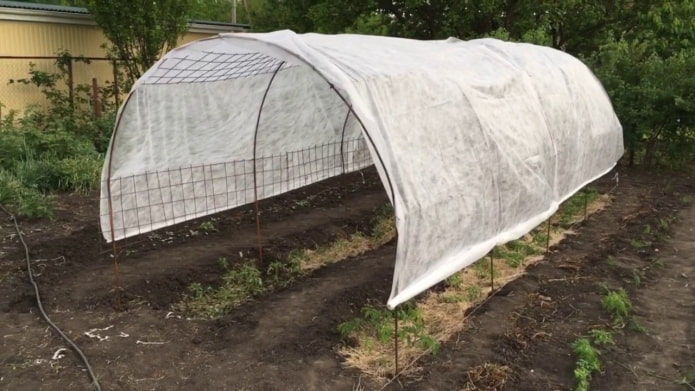
Pools and artificial reservoirs
Those who have a pool or artificial reservoir at their dacha know very well how carefully it should be cleaned. The fact is that a considerable part of waterproofing materials used in dacha areas have low strength and can be damaged even by weak mechanical impact.
A logical solution to this problem is to use geotextiles over the waterproofing. Unlike the latter, geotextile has a huge margin of safety.
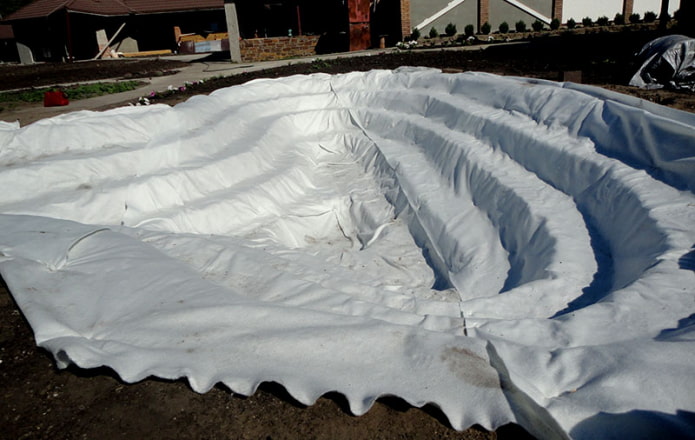
Restraining the root system
In some cases, gardeners need to restrain the growth of the root system of trees or shrubs. Geotextile, which, due to its high strength, is able to prevent roots from spreading beyond its boundaries, is perfect for these purposes. To do this, you need to:
- Dig a hole at the site of the future plant.
- Line it with geotextile. It is important that a small margin of material remains along the edges of the hole.
- Fill the resulting “pot” with soil.
- Plant the plant.
Note. It is worth noting that this method works both ways, so it is great not only for containing the root system, but also for protecting it from environmental hazards, such as insects.
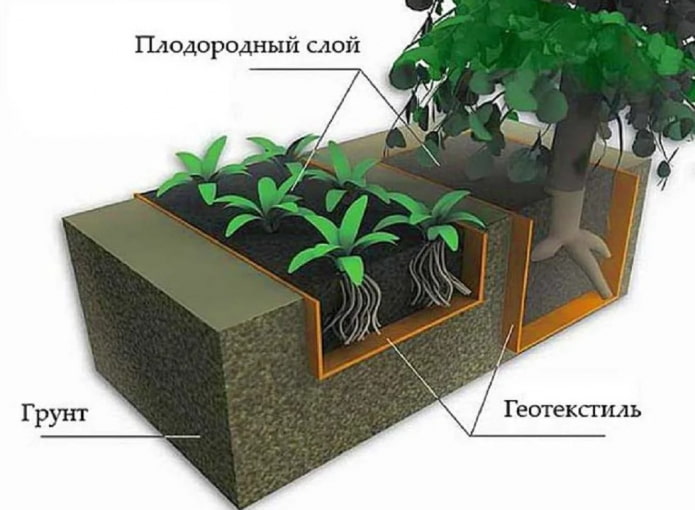
Frost protection
Geotextile is often used to protect plants from night frosts. Compared to regular fabric or film, which are most often used to cover plantings from frost, geotextile has better thermal insulation properties. In addition, geotextiles are usually produced in black, due to which they heat up better.
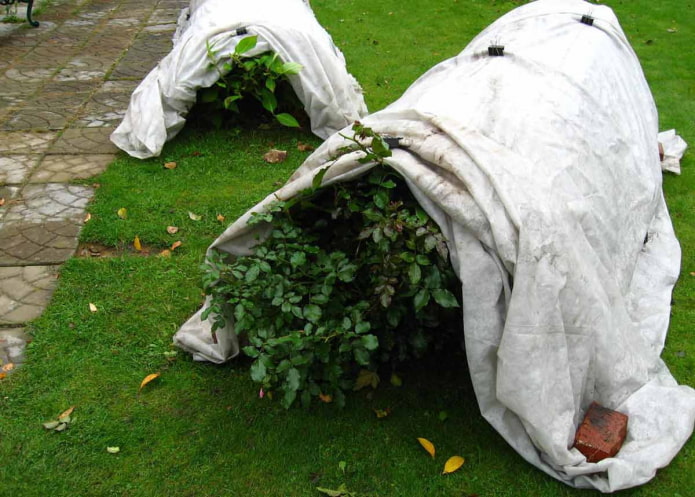
As you can see, geotextiles are a truly universal material that can be used in almost any area, because with its help you can avoid many problems that every summer resident faces. Therefore, be sure to take a closer look at this budget and affordable material, which can be purchased at almost any large gardening store.
Now reading:
- Living room design: 88 original photos and interior styles to choose from
- 2x2m Kitchen Design Ideas: Real Pictures and Furniture Recommendations.
- Kitchen 14 m²: decor ideas and 54 examples of interior design
- Yellow Curtains for Windows: Over 80 Photos and Stylish Interior Design Ideas
- Kitchens in wood style: 35 inspiring photos and design solutions.